Fireplace Restoration in Period and Heritage Properties

Are you the owner of a character, heritage or period property or have recently purchased one and are setting out to turn it into your dream home? You will most likely be considering restoration work and, amongst the tasks will likely be a fireplace restoration. Fireplaces are the focal point of any room, so you’ll want to make it look its best, or even become a talking point with friends and family. Whatever the situation, your first considerations will begin with the current state of the fireplace and chimney. In some cases, the hearth could have been boarded up, or perhaps there’s an old appliance that you wish to replace or do away with completely. In this article, we look at fireplace restoration in period and historic properties, offer some helpful tips and provide information on how your project will result not only in a beautiful new fireplace but importantly, that it is safe and efficient.
Where to start with your fireplace restoration
Whether or not you are preserving or recreating the fireplace, the first action must be an inspection by professionals like Billing Chimneys. If a fireplace and its chimney are not properly maintained then it will most probably be inefficient and cost more to run than necessary. More seriously, if the structure has issues, there may be leakages of dangerous gases into rooms which can result in illness and even death. Therefore, we cannot emphasise enough that chimneys should be regularly swept and inspected.
Following sweeping, an inspection of the fireplace and the flue, or flue lining will show up any problems. This will ensure that any costs incurred in bringing the structure up to standard can be accounted for in your project’s budget from the start. At Billing, we use state-of-the-art CCTV, illuminated by LED lighting and using video recording. Any issues can be spotted during the inspection and on further checking of the video. Once your chimney has been swept, the flue and fireplace inspected and any repairs made, you can go ahead with your project.
In addition to the safety factor, there are advantages to calling in professionals at the start of your fireplace restoration project. Heritage and period properties could be listed buildings, be situated within conservation areas, within areas of outstanding natural beauty or combinations of the three. In these cases, building consent and planning permissions may be required. A competent chimney specialist will be able to advise on any restrictions and regulations and can advise you whether they apply to your property and the proposed project.
Starting your fireplace restoration project
Should the original fireplace have been stripped out before bricking or boarding up, then you can try to find out what the original fireplace looked like. Are there similar houses in the neighbourhood? You could ask around if anyone still has original features in their homes and if you could take a look. You could look at specialist books and magazines or there may be old photographs at your local library or archives.
If your fireplace or fireplaces have been boarded up, then it can be exciting to uncover what is behind the brick or plaster. In some cases, original features can be exposed, and this might give you further ideas for the design of the fireplace. It might also inform whether you will have an open fire or have an appliance such as a wood-burning stove installed. Victorian houses often had cast-iron fireplace surrounds and decorative tiles. These could be quite ornate. 1930s homes also used tiles often in the Art Deco style or similar which could still be intact. There are some wonderful wooden fireplace surrounds that could be renovated. If you are hoping to find something in keeping with the age and character of the house, but are disappointed once the boards are removed, then it’s possible to recreate the look. There are reproduction fireplace surrounds widely available that would suit most designs. However, should you want authenticity, then some companies supply salvaged original fireplace surrounds and furniture.
Types of original fireplace surrounds and mantlepieces found in salvage include:
- Cast Iron
- Stone
- Marble
- Tiled
- Oak beams
You may be changing from an open fire to a wood-burning stove, so you will have the option of redesigning the hearth. You might leave the bricks exposed to give a rustic look or you might want to plaster over them, creating a crisp, clean-looking alcove.
There’s a fantastic range of designs for wood burners and another option could be a double-sided stove. This works where two rooms share a chimney, and the stove is shared between the two rooms.
It is worth considering the fact that an open fire is 20% efficient at heating the room/property, whereas an enclosed freestanding stove is 80% efficient. This does not however mean that you need to sacrifice a period look as there are as many traditional style stoves available as there are contemporary.
Fireplace restoration on a budget
A simple, but effective way to restore a fireplace is with a new mantle. As mentioned above, there are some good reproduction fireplace surrounds on the market. You could find bargains at reclamation yards too. If you’re having a wood-burning stove, plastering the brickwork and painting along with a plain aperture with no mantle can be a stylish option. Whatever you decide to do decoratively, never compromise on safety, always keep the chimney swept and have regular inspections. If you’ve uncovered an old fireplace and can’t decide what to do, then Billing Chimneys engineers would be happy to offer some ideas for your restoration, including less expensive options.
Can I carry out fireplace restoration myself?
Yes, once the chimney has been swept and professionally inspected, you’ll be in a good position to decide what next for your fireplace restoration. Do remember that structural changes or adding or changing an appliance will come under building regulations and a listed building is subject to additional regulations. You will be responsible for paying all charges associated with these.
Checklist for fireplace restoration
Restoring a fireplace can create a wonderful focal point in a room and can be a fun project to undertake. Planning each stage of your project will ensure it is successful.
- Work out whether you are recreating a particular look, or restoring existing features
- Remove any boarding to discover what’s underneath
- Have the fireplace and flue inspected by an experienced chimney company like Billing Chimneys
- Does the work need any permissions from the local authority, if so start an application early
- If having an appliance, research makes and models to find the best for your room size and overall design scheme
- Set your budget
- Book your installation
- Carry out the decoration if doing it yourself.
- Light the fire
- Enjoy your beautifully restored fireplace
If you keep safety at the core of your project and take time over the choices you make, your beautifully restored fireplace will give you years of pleasure and provide a cosy focal point in your home.
Billing Chimneys is proud to have accreditation from HETAS, but why is that, and what is HETAS? In this article, we talk about HETAS and why it is important to us as a company not only as an indicator of the quality of our work but also for providing confidence and reassurance for our customers.

Who are HETAS?
The acronym HETAS stands for Heating Equipment Testing and Approval Scheme, but its work goes beyond this single statement. HETAS is a non-profit organisation that is not only about the testing and approval of heating equipment but also provides a range of services for companies like Billing Chimneys. HETAS offers expert advice and training to installation companies and offers information to the general public. In its essence, it is about improving safety and air quality by ensuring those who are installing heating equipment are competent and their services meet a high standard.
HETAS maintains registers of appliance installers, service engineers and chimney sweeps who are fully trained and competent. Additionally, they maintain registers of competent retailers. This aims to give confidence to consumers when having heating equipment installed in their homes and businesses. HETAS also provides information on fuels and fuel efficiency as part of their drive for air quality.
Central to this is HETAS’s impartiality. They state: ‘Providing trustworthy information is at the heart of our service, especially through our website and HETAS Guide.’ To do this HETAS undertakes research that provides evidence-based information to influence decision-makers, including the government, on which to base legislation.
Why HETAS matters to Billing Chimneys
Safety is at the heart of everything Billing Chimneys does, from the smallest domestic installation or inspection to a large commercial contract. It was due to one of our larger customers that Billing Chimneys joined the accreditation scheme. Tony Billing, Director said: ‘Initially we signed up as one of our larger customers requested it to be able to go ahead with the job, and after proceeding we realised it would be beneficial to all of our customers.’
As members, Billing Chimneys can take advantage of training schemes run by HETAS. Also, the fact that registration needs to be renewed regularly has the advantage of continuous professional development for staff. Tony says: ‘HETAS registration for each installer expires after 4 years so periodically undertaking refresher courses ensures that our engineers always remain up to date on current installation regulations.’
It isn’t only Billing’s expert installation engineers who benefit from HETAS training. ‘HETAS also provide courses for our non-installers which is great as this provides further knowledge on regulations, standards, legislation and appliance sizing without having to become an installer.’ Added Tony.
Adhering to the relevant regulations is essential to ensure high standards and safety with heating installations, crucially, non-compliance could lead to work needing to be redone. Many installations must be notified to the local council which attracts a fee and this can take time, however, having HETAS accreditation takes care of this. Tony explains: ‘Completing the Certificate of Compliance on an installation and sending to HETAS automatically notifies the Local Authority Building Control (LABC) which is a legal requirement. If we were not registered installers, we would have to notify the LABC, pay the fee and arrange for them to visit which slows down the process for the customer as we would not be able to sign off immediately. Some smaller straightforward installations can therefore be completed in as little as 1 or 2 days.’
How HETAS benefits consumers
HETAS benefits consumers in a variety of ways but the key element is its independence, operating openly and with objectivity and impartiality. Consumers researching companies to undertake a heating installation in their home or business can rest assured that hiring a HETAS registered engineer will ensure high standards and compliance with regulations.
HETAS works with a wide variety of partners to ensure a broad scope of knowledge and input, including government, industry experts and innovators. As a not-for-profit company, it is overseen by an industry body of members who provide guidance and direction. HETAS itself is subject to an annual audit by the United Kingdom Accreditation Service (UKAS).
Overall, HETAS provides consumer confidence by:
- Providing impartial information and advice
- Keeping a register of competent installers that consumers can search
- Keeping a register of approved servicing
- Keeping a register of approved chimney sweeps
- Approving products and ensuring standards are met
- Approving retailers
- Promoting safe and responsible use of biomass and other fuels
- Providing information on fuel and quality assured fuel
Most of this information is available through the HETAS website and if you need to speak with one of their experts there are dedicated email addresses for different service areas, including homeowner support. Consumers can search the registers of installers, providers of servicing and chimney sweeps. Leaflets are available for download and examples include advice on wood-burning stoves, solid fuel heating and chimney and flue systems.
Following an installation, a certificate of compliance is issued. This is an important document.
What does the Certificate of Compliance Cover?
When your installation has been completed you will receive pink copies of the completed and signed HETAS Certificate of Compliance and HETAS Commissioning Sheet. A white copy of the Certificate of Compliance is also sent directly to HETAS to confirm compliance with building regulations and for them to notify the local authority’s Building Control.
The certificate details:
- Customer’s address and contact information
- Work completion date
- Installer’s name and company details and HETAS registration information
- Type of appliances installed (if applicable)
- Type of liner installed (if applicable)
- Type of microgeneration installed (if applicable)
- Type of heating and how water is installed (if applicable)
- Type of plumbing installed (if applicable)
- Confirmation that a notice plate and carbon monoxide alarm has been fitted
- What the installation has replaced (if applicable)
- Location of the installation
- Product make/model/output (if applicable)
- Confirmation that the appliance has been tested and commissioned
- Signature of the installer to declare that the work has been carried out in accordance with building regulations
The white copy of the certificate will then be sent back to the customer by HETAS and should be retained for future reference (it may be requested upon sale of the property etc.). Replacement copies can only be provided by HETAS directly at a cost.
Proud to be HETAS registered
Having HETAS accreditation is beneficial to us as a company and to our customers. Through HETAS accreditation, Billing Chimneys’ customers can be satisfied that all our engineers work to a high standard, receive continuous professional development and keep at the top of their profession. Our non-engineering staff maintain the same high standards, ensuring they are knowledgeable and can speak with confidence to customers.
Whilst Billing Chimneys first joined HETAS because it was requested by a client we quickly saw that there were advantages for both ourselves and our customers. We are and remain proud HETAS members keeping us up to date with the latest training and information and providing our customers with peace of mind when engaging our services.
If you want to read more about HETAS see: www.hetas.co.uk
Water leaks relating to the chimney are quite common as a property ages or following other works that have disturbed something within the chimney. Leaks can travel away from their source confusing customers as to the reason behind the leak.
A leaking chimney usually presents itself to the homeowner in the following ways: peeling wallpaper, a damp patch on or near the chimney breast (at any level of the property), water in the fireplace, dripping noise in the chimney, rust on your fireplace grate or flue pipe.
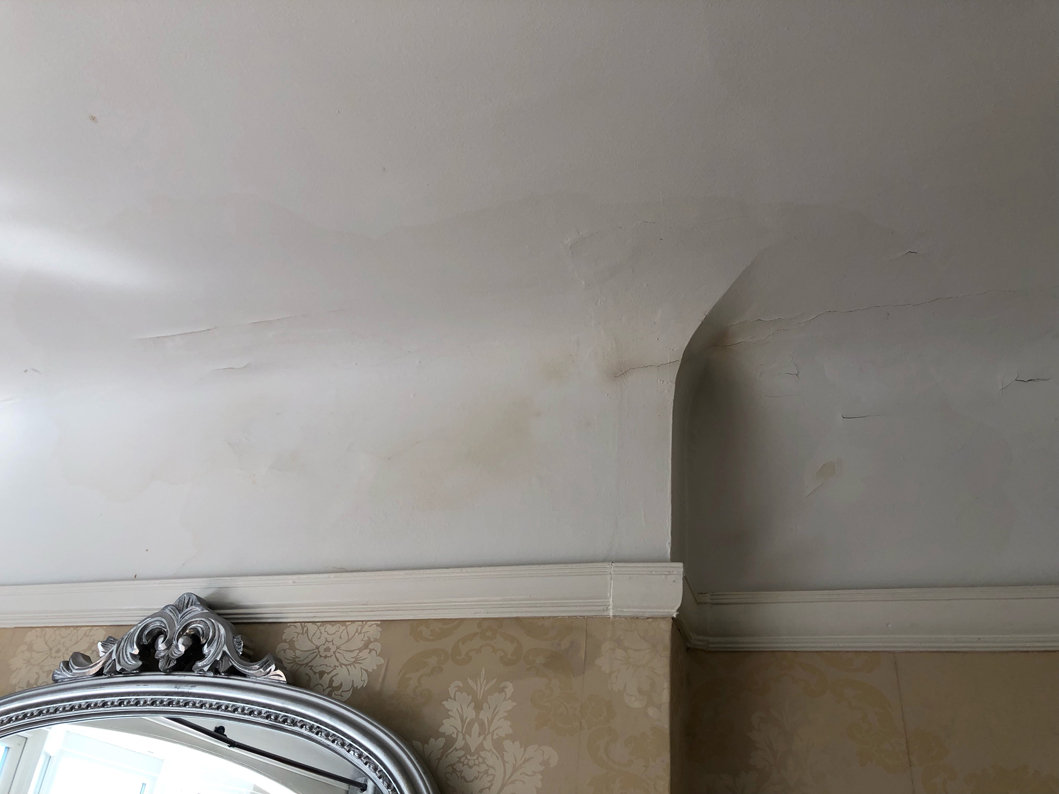
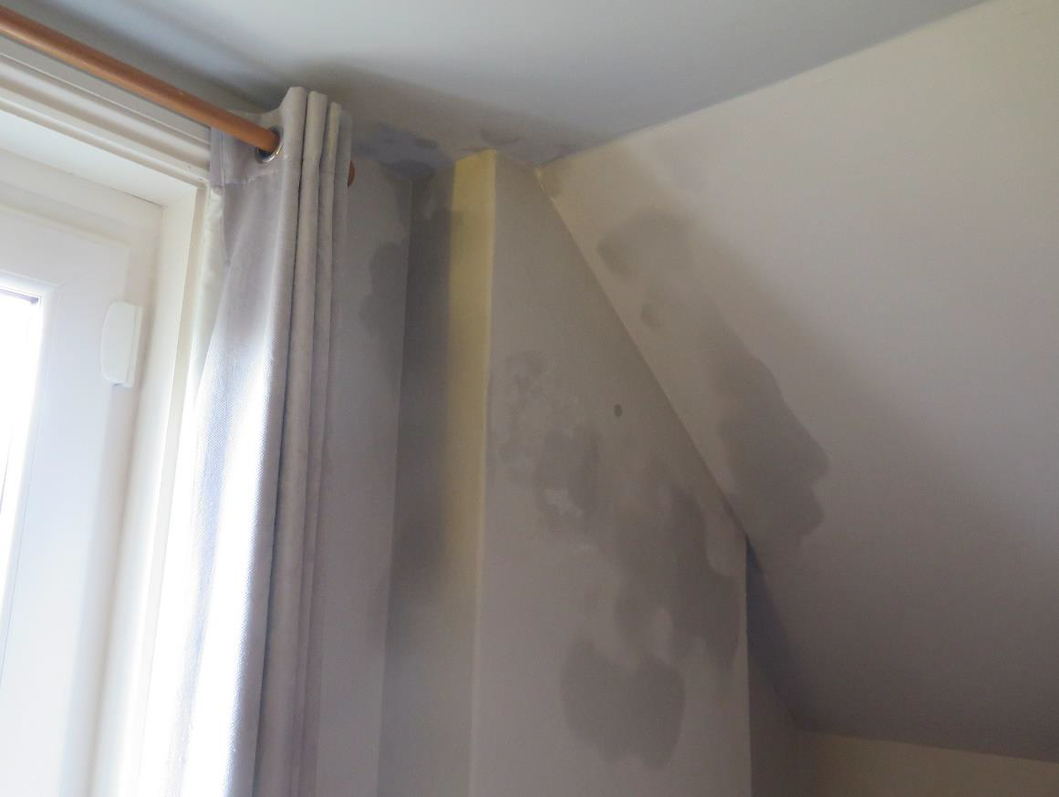
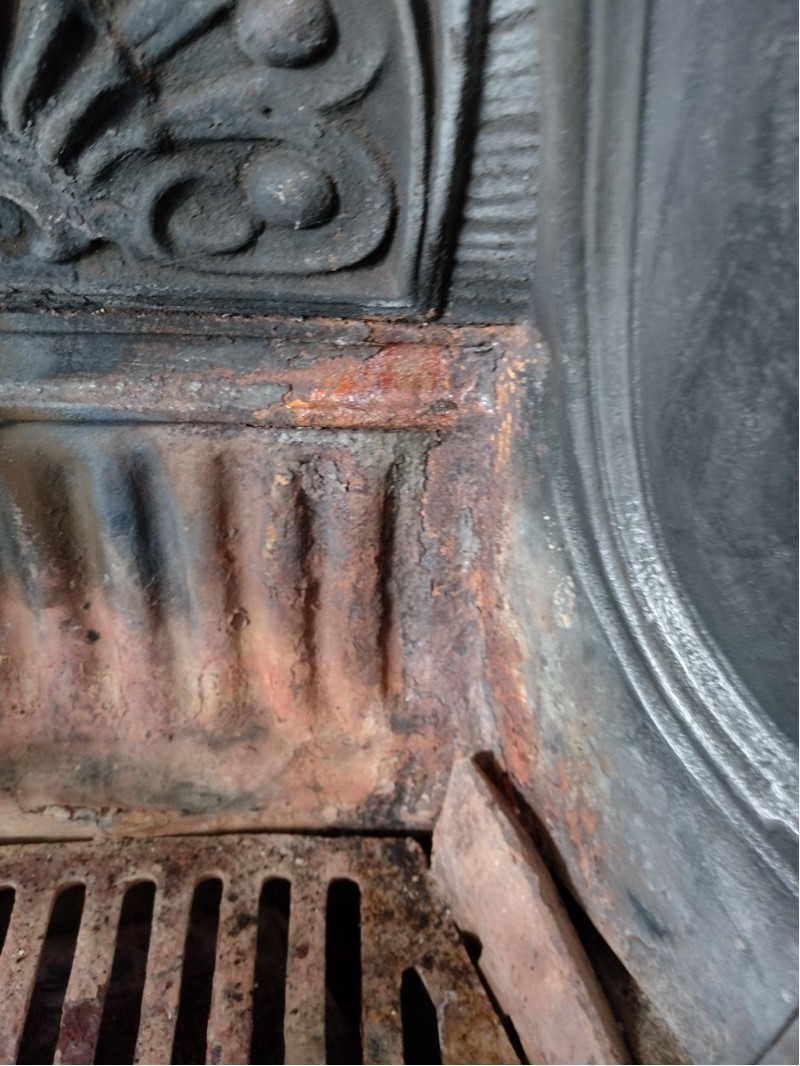
It is not unusual to hear from customers who have had remedial works carried out to their chimney stack by a third party, to then find that the leak persists. In these cases, we are able to use our many years of experience to offer a suitable resolution. We also have specialists to undertake areas such as leadwork which can cause further issues when poorly installed by an unqualified individual.
Causes
- No cap
- Damaged cowl
- Frost
- Faulty flashing
- Deteriorated brickwork/mortar
- Deteriorated/defective flaunching
- Condensation within the flue
- No lead tray(s)
- Damage caused by poor installation of the flue liner
- Deterioration of the flue liner
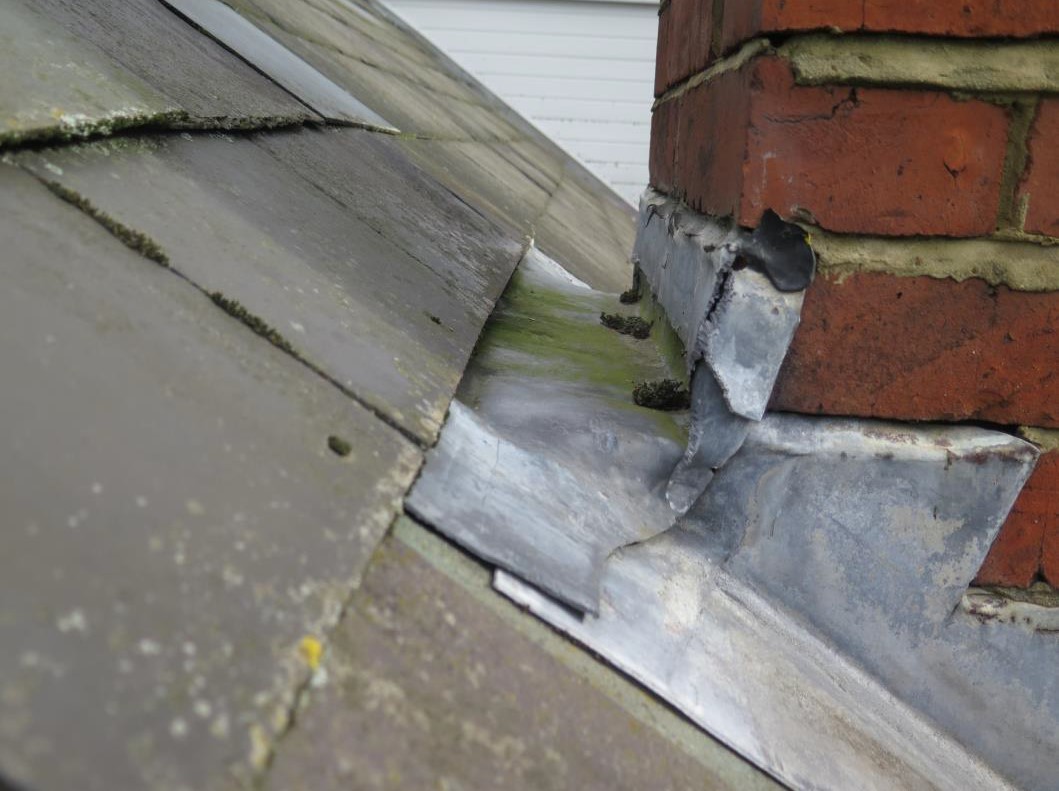
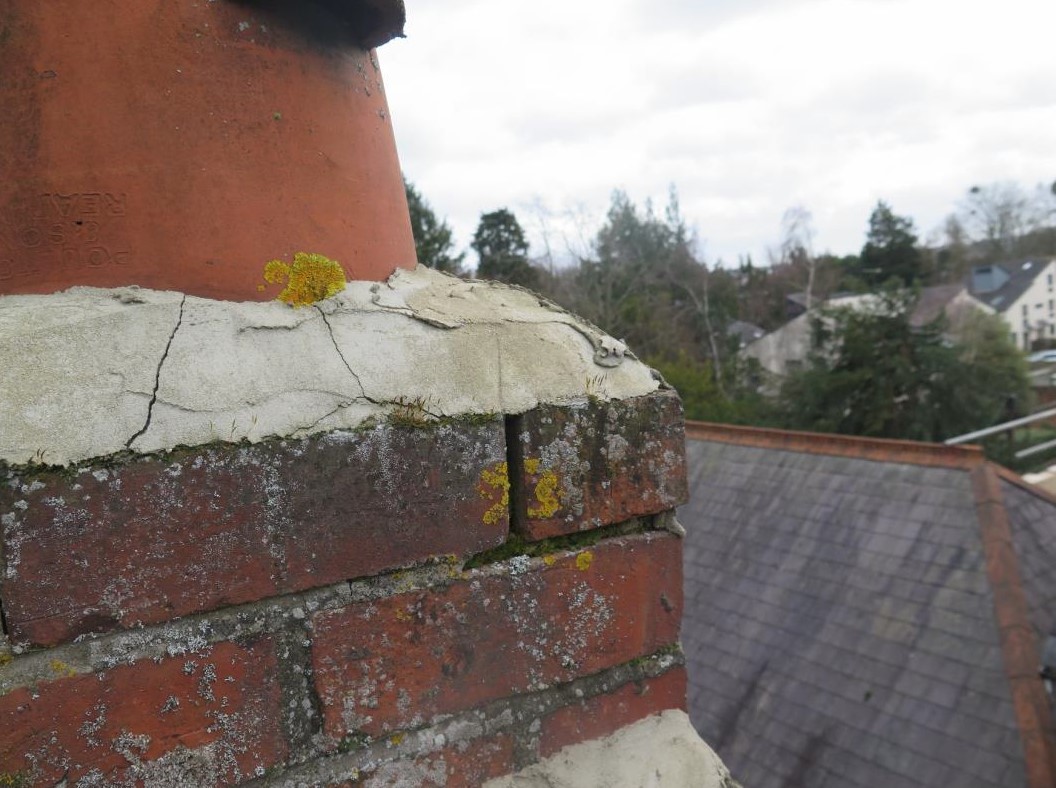
Remedies
- CCTV inspection of the flue shaft/flue liner to highlight any defects
- Drone inspection of the exterior of the chimney to determine the cause
- Cap or cowl installation/replacement with new weather flaunching
- Chimney repointing
- Replacement leadwork
- New or replacement flue liner
- Chimney rebuild with new lead trays
- *Please note: Applying waterproofing/water repellent to the exterior of the stack does not allow the chimney to breathe which may cause further issues.
Dangers of untreated chimney leaks
Untreated damp and mould can cause or aggravate respiratory issues and affect the immune system. Babies, children, the elderly and those with asthma or pre-existing respiratory conditions are more susceptible. Adverse signs to look out for include those similar to an allergic reaction; sneezing, runny nose, rash, red eyes, loss of breath or asthma attacks.

Listed Buildings
Historic England defines listed building consent to be “required for all works of demolition, alteration or extension to a listed building that affect its character as a building of special architectural or historic interest”.
Just like placing a building notice or applying for planning permission, applications are made to the Local Planning Authority and the outcome will be determined by the LPA consulting with Historic England and the National Amenity Societies.
Many owners of listed buildings will already be familiar with Historic England as this is where listed properties are registered, however National Amenity Societies are statutory consultees which must be notified by law of any work that involves demolition to a listed property. Further, many areas in England and Wales also have Civic Societies (some recognised by the LPA) which comment on planning and historic building matters within their local area.
Fire Risk Guidance in Listed/Thatch Properties
Under the instruction of Historic England, The Fire Protection Association researched over the course of three years the relationship between wood burners/stoves and chimney/thatch fires in order to make recommendations as to how the risk could be minimised.
In 2018 they published the results which found that the “heat transfer” theory used to explain many chimney fires was not accurate; with fires starting shortly after a wood burner had been lit or where an insulated flue liner was already in place. Furthermore, it found that in thatch properties that the thatch could be ignited by sparks and embers from the chimney and that spark arrestors did not appear to reduce this risk and may encourage sparks to remain close to the thatch. It was also highlighted that defects in the chimney stack could cause fires to be started flue gases leaking into the thatch. Additionally, some designs of stove were found to be more safe than others.
As a result of their findings, new guidance was issued for thatched properties including “The fundamental recommendation is that wood burning and multi-fuel stoves should not be used in thatch roofed buildings.”
There are an estimated 60,000+ thatched properties in the UK and approximately 75% of these hold listed status.
Where stoves are being used, the guidance lists the following actions to reduce the risk of fire:
- Sweeping chimneys frequently
- Sufficient distance between thatch and top of chimney pot (current building regulations stipulate 1.8m)
- Fitting bird guards
- Installing suitable flue liner
- Taking care when lighting the stove
- Taking care when refuelling the stove
- Fitting a stove pipe temperature gauge
Please note, in a listed property, before planning/carrying out any changes relating to your fireplace, chimney or flue it would be advisable to seek advice from the LABC. Additionally contacting your home insurance policy provider to check if they have any conditions that would apply to any changes you are wanting to make (i.e. type of flue liner, stove etc.).
Further guidance from Historic England and the Fire Protection Association can be found on their leaflet at the link below:
https://www.thatchadvicecentre.co.uk/wp-content/uploads/2018/08/FPA-Guidance.pdf
Most Commonly Used Flue Lining Systems in Listed Properties
Our most frequently used, and in our opinion most effective, methods of flue lining in listed properties include:
- Twin Wall
- Isokoat
- Pumice
1. Twin Wall
This lining system is essentially a flue pipe with another flue pipe inside, with insulation between the two. The insulation layer ensures that the inside of the flue is kept at a high temperature to ensure correct function of the fireplace/stove and to keep the outside of the flue cooler to minimise any heat transfer risk (please note that the exterior of the pipe will still be warm to touch). Billing Chimneys preferred choice of twin wall flue system is manufacturer guaranteed for 20 years*.
2. Isokoat
This lining system is applied to the flue wall throughout its height in 2 or 3 coats to ensure a smooth surface and sealed flue shaft. Applied under pressure, Isokoat is forced into any gaps or cracks within the flue wall bridging them to ensure that fumes and products of combustion will be safely emitted to the outside air. This method allows the largest possible flue dimensions to be maintained which can be vital where the masonry flue dimensions are already small. Depending on the configuration of the flue shaft it can sometimes be necessary to create an access hole into the flue shaft (i.e. on the first or second floor) with the disturbed area made good to a plaster finish once flue lining is complete. The Isokoat flue lining system is manufacturer guaranteed for 10 years*.
3. Pumice
This lining system is made of sectional liners which are highly insulating for better draw and minimal heat loss. The durability and life expectancy of these liners far exceed that of other systems and provide greater protection to the chimney and adjacent structures in the event of a chimney fire. The installation does involve accessing the flue at two or three positions with the disturbed area made good to a plaster finish once flue lining is complete. The pumice flue lining is manufacturer guaranteed for 10 years*.
If you do have any further questions about listed building consent or require any chimney/fireplace work, please don’t hesitate to contact Billing Chimney’s on 01425 475774.
*Manufacturer conditions apply
Is chimney height important?
At Billing Chimneys we’re are constantly reiterating the importance of chimney safety. A key aspect of this is that a chimney or flue should create sufficient draft to take away the harmful gases created by the fuel burned by open fires and appliances. The efficiency of this draft is affected by the chimney height and because this is a safety issue, the recommended chimney height is set out in UK Building Regulations 2010 and found in Approved Document J. In addition, British Standards, BSEN 15287* and BSEN 8303** offer further guidance on best practice.
The Building Regulations class chimney and flue systems as ‘Controlled Services’ and combustion appliances, such as wood burning stoves and AGAs, are ‘Controlled Fittings’. Enforcement of the regulations are the responsibility of your local authority who must be notified of any work associated with such controlled services and controlled appliances.
It is important that anyone carrying out building work where there’s a requirement under the regulations must ensure that the work complies with those requirements. Work not carried out to the correct standard could end up costing more as the local authority can order further work, or even demolition and a rebuild. Failure to comply can result in fines too. A lot of chimney work does not need planning permission, but it does need to conform with the building regulations, therefore a building notice is often required, so, how can you ensure your chimney complies?
Exact height requirements and where to take measurements from are given in paragraphs 2.8 – 2.9 of Approved Document J (ADJ). Also vital in any design are flue termination heights and locations which are also set out in the document.
In addition to the regulations, all appliance installation instructions have a minimum flue height given. This needs to be considered, especially as fuel type also effects termination locations. Taking into account the correct flue termination heights and location is also vital in any design.
Chimney height is important in all instances. Firstly, chimney height will have been designed into the property when it was built. Instances of where you will need to consider chimney height include new buildings, conversions, rebuild of chimneys, in fact any situation where you are fitting, altering, or replacing an external flue or chimney should be checked. The position of the chimney is also important, it needs to be away from windows and adjacent properties and there are areas of a roof where a chimney should not be placed. As with chimney height, details of chimney and flue location requirements are laid out in the regulations.
How does chimney height affect draft?
A chimney works by draft, where the gases produced by burning are drawn upwards and out of the chimney or flue. It does this because the fire or appliance heats the air which rises to meet colder air above creating pressure. The higher the chimney, the better the draft. There does come a point however where a chimney might be too tall as there will not be enough pressure and the gases will revert down the chimney. Similarly, a system that’s too short will not produce enough draft. If insufficient draft is an issue a chimney height extension is something to consider.
Explaining this can become very technical, we’re talking about pressure differential in the flue or chimney, this is the difference in pressure between two points. Chimneys work on negative pressure; all flue systems have a designation, either N or P. These points in a chimney will be where the hot and the cold air meet. Chimney height will affect where these points will be and how effective the draft will be.
How does chimney height affect safety?
Chimney height dictates the safety of a chimney in different ways. As we’ve explained a chimney needs height to produce a good enough draft to draw out and expel the harmful gases created by combustion – burning of fuels. Failure to expel the gases can result in Carbon monoxide poisoning. The location of the outlet, the proximity of other buildings, topography and geography along with localised atmospheric conditions all need to be considered.
There are numerous other reasons for a chimney to be of the height stipulated in the building regulations. These include:
- Preventing smoke re-entering a property, being drawn back down a redundant flue shaft or another live flue etc.
- Prevention of smoke nuisance.
- To avoid potential fires being caused by hot embers rising in the chimney and sending out sparks, so for example chimneys must be situated away from window frames.
- Chimney height is also particularly important with thatched properties where chimneys often require to be heightened to meet current regulations.
How do I find out if my chimney is the correct height?
Details of the current building regulations for chimneys and flues are readily available, but the jargon can be confusing and the calculation procedure difficult. Chimney or flue height will depend upon the appliance installed and the manufacturer’s guidance should be followed. You may be surprised to know that local wind conditions are also factored into calculating a chimney height. Additionally, the area surrounding the building with the chimney might include structures such as tall buildings and even trees, and these can affect draft.
The chimney height above the roof is measured from what is termed the weather surface to the flue outlet. The weather surface means for example the roof tiles or felt, and the outlet measurement does not include any caps or cowls. The location of the chimney or flue will depend upon the design of the roof itself and it’s not always possible to simply extend a flue height. Also, a flue system must be continuous.
What about my wood burner?
These regulations apply for flues to wood burners too. The building regulations state that if all guidance is followed a minimum flue height of 4.5m, from appliance to top of the flue, could be acceptable, but it is best that a full assessment and calculation is undertaken. The outlet from the flue should be above the roof as the gases being emitted need to discharge safely and not present a potential fire hazard.
Helping the professionals
Billing Chimneys has many years and are experience and have been supporting professionals in ensuring chimneys are compliant with the building regulations and suggesting changes to chimneys and chimney design where necessary. The building regulations stipulate rules for the location of a chimney or flue. This is for safety reasons and includes distances from ridges and any roof windows.
We work with architects, designers and building contractors, so anyone wanting to include a chimney or flue into a design or want to make alterations that involve a chimney and want to ensure the local building control will be happy with proposal, we can help here. If in doubt, call Billing Chimneys!
Billing’s experts are the people to call
The height of your chimney is maybe something you have never given much thought to, but it is part and parcel of your heating system and needs to work safely, legally and at its optimum capacity. The physics behind this may appear daunting and too complicated to think about, which is why it’s best to engage professionals.
References
*BSEN 15287 – Refers to Chimneys. Design, installation and commissioning of chimneys. Chimneys for non-roomsealed
**BSEN 8303 – This British Standard specifies requirements for the design and installation of the following types of domestic heating and cooking appliances, rated up to 50 kW, burning wood, woody biomass and solid fuels in both new and existing buildings. a) open fires; b) room heaters; c) free-standing cookers; and d) independent boilers. The standard also specifies the procedures to be followed for on-site testing of the installations.



